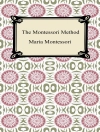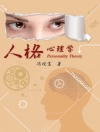‘This highly practical and readable book gets right down into the detail of what good formative assessment looks like in math classrooms, and shows how teachers can make this a part of their regular planning and instruction.’
—Dylan Wiliam, Emeritus Professor of Educational Assessment, University College
Imagine how it would feel to not worry about how to plan, teach, and check for student mathematical understandings and related proficiencies. Imagine if this important process felt like a natural, every day, part of your lesson preparation instead of an extra thing to do. This must-have resource shows the way.
NCTM Past President, Francis ‘Skip’ Fennell, and nationally-recognized mathematics educators Beth Mc Cord Kobett and Jonathan (Jon) Wray, offer five of the most impactful, proven assessment techniques—Observations, Interviews, ‘Show Me, ‘ Hinge Questions, and Exit Tasks— you can implement, every day. Tried and tested by teachers just like you, you’ll find that this palette of classroom-based techniques will truly assess learning and inform teaching.
Research and classroom practice indicates that formative assessment is poorly understood. This book gives you a concise, research-based, classroom-dedicated plan with lots of tools, activities, classroom vignettes, and student work to guide your daily use of these techniques – The Formative 5.
Both within and between lessons, K-8 teachers of mathematics will learn to
- Think and go beyond assessment of learning, focusing on assessment for learning
- Directly connect assessment to planning and teaching
- Engineer effective classroom questioning, discussions, and learning tasks
- Provide success criteria and feedback that moves students forward
- Integrate the Standards for Mathematical Practice
- Activate student self-assessors who take ownership of their learning
Includes a book study guide, tools and templates, and a companion website with downloadables and multi-media examples of student discussion in the classroom. The Formative 5 will help you build your mathematics-related formative assessment capacity through daily use of these five key techniques, leading to regularly monitored and improved learning opportunities for your students.
Now Available: The On-Your-Feet Guide to The Formative 5
Tabela de Conteúdo
Foreword
About the Authors
Preface
Acknowledgments
PART I Getting Started
WHY FORMATIVE ASSESSMENT? ISSUES AND OPPORTUNITIES
Assessment Literacy: What Is It? Why Is This Important?
Formative/Summative: It’s All Testing, Right?
Formative Assessment: Assessing to Inform
Classroom-Based Formative Assessment: Why Is This Important? You Do Have the Time to Do This!
Formative Assessment in YOUR Classroom: The Classroom Is Your Canvas!
Summing Up
Professional Learning Discussion Questions
PART II The Formative 5
CHAPTER 1 OBSERVATIONS
Observations: Background and Basics
Planning for Observations
Tools for Using Observations in the Classroom
Technology Tips and Tools for Recording Observations
Using Observations in YOUR Classroom
Summing Up
Professional Learning Discussion Questions
CHAPTER 2 INTERVIEWS
Interviews: Background and Basics
Planning for the Interview
Tools for Using Interviews in the Classroom
Technology Tips and Tools for Recording Interviews
Using Interviews in YOUR Classroom
Summing Up
Professional Learning Discussion Questions
CHAPTER 3 SHOW ME
Show Me: Background and Basics
Planning for Show Me
Tools for Using Show Me in the Classroom
Technology Tips and Tools for Recording Show Me Responses
Using Show Me in YOUR Classroom
Summing Up
Professional Learning Discussion Questions
CHAPTER 4 HINGE QUESTIONS
Hinge Questions: Background and Basics
Planning for Using Hinge Questions
Tools for Using Hinge Questions in the Classroom
Technology Tips and Tools for Recording Hinge Questions
Using Hinge Questions in YOUR Classroom
Summing Up
Professional Learning Discussion Questions
CHAPTER 5 EXIT TASKS
Exit Tasks: Background and Basics
Planning for Using Exit Tasks
Tools for Using Exit Tasks in the Classroom
Technology Tools and Tips for Exit Tasks
Using Exit Tasks in YOUR Classroom
Summing Up
Professional Learning Discussion Questions
PART III Next Steps
CHAPTER 6 IT’S YOUR TURN!
Why Formative Assessment? Issues and Opportunities
Chapter 1: Observations
Chapter 2: Interviews
Chapter 3: Show Me
Chapter 4: Hinge Questions
Chapter 5: Exit Tasks
What’s Next?
Appendix: Book Study Guide
References
Index
Sobre o autor
Beth Mc Cord Kobett serves as Professor and Dean in the School of Education at Stevenson University, where she works closely with early childhood, elementary, and middle school preservice teachers. She brings experience as a classroom teacher, mathematics specialist, and university supervisor. Beth served on the NCTM Board and served as president of Association of Maryland Mathematics Teacher Educators. Beth has authored ten mathematics education books and supports professional learning efforts nationwide. She has been honored with awards such as the MCTM Mathematics Educator of the Year and Stevenson’s Rose Dawson Award for Excellence in Teaching. Deeply committed to her students, she strives to create a supportive, strengths-based learning environment that fosters curiosity, collaboration, and meaningful growth.












